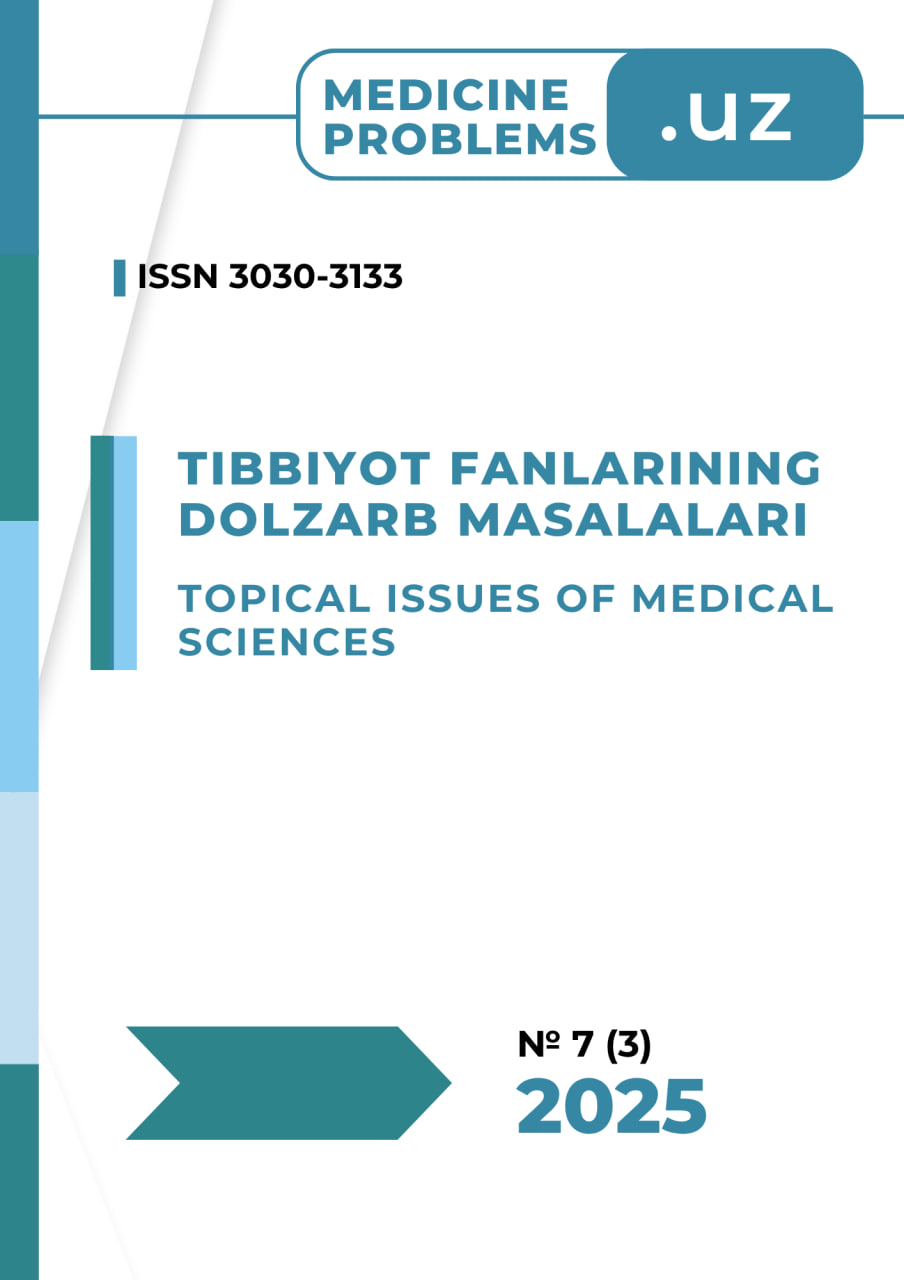THE "ATHLETE'S HEART" PHENOMENON IN THE CENTRAL ASIAN POPULATION: SPECIFIC ELECTROCARDIOGRAPHIC AND ECHOCARDIOGRAPHIC CHARACTERISTICS OF UZBEK ATHLETES AND MILITARY PERSONNEL
DOI:
https://doi.org/10.47390/Med-pro/v3i7y2025/N04Keywords:
athlete's heart, sudden cardiac death, athlete's ECG, left ventricular hypertrophy, screening, ESC recommendations.Abstract
Objective: To analyze electrocardiographic and echocardiographic characteristics of the heart in athletes and military personnel of Uzbekistan according to international consensus (ESC 2022, AHA/ACC) and to develop practical recommendations for screening sudden death risk factors in individuals engaged in physical activities.
Methods: The study involved 75 highly qualified athletes and 44 military personnel. All participants underwent ECG and echocardiography. The obtained data were compared with the "Seattle Criteria" (2013) and new ESC recommendations on sports cardiology (2022).
Results: Characteristic adaptive changes were identified: sinus bradycardia (4%), first-degree AV block (3%), QT interval prolongation (346±26 ms). The left ventricular mass index in athletes was 130.88±3.17 g/m², which exceeds ESC 2022 threshold values, but with preserved systolic and diastolic function corresponds to the model of concentric physiological hypertrophy. Military personnel also predominantly exhibited concentric left ventricular hypertrophy associated with the nature of their training.
Conclusion: The study results generally align with international data but demonstrate specific features in the Uzbek population that require consideration when developing national screening protocols.
References
1. Corrado D, Pelliccia A, Bjørnstad HH, et al. Cardiovascular pre-participation screening of young competitive athletes for prevention of sudden death: proposal for a common European protocol. Consensus Statement of the Study Group of Sport Cardiology of the Working Group of Cardiac Rehabilitation and Exercise Physiology and the Working Group of Myocardial and Pericardial Diseases of the European Society of Cardiology. Eur Heart J. 2005;26(5):516-524. doi:10.1093/eurheartj/ehi108
2. Baggish AL, Wood MJ. Athlete's heart and cardiovascular care of the athlete: scientific and clinical update. Circulation. 2021;143(17):1693-1705. doi:10.1161/ CIRCULATIONAHA.120.052386
3. Maron BJ, Friedman RA, Kligfield P, et al. Assessment of the 12-lead electrocardiogram as a screening test for detection of cardiovascular disease in healthy general populations of young people (12-25 years of age): a scientific statement from the American Heart Association and the American College of Cardiology. J Am Coll Cardiol. 2014;64(14):1479-1514. doi:10.1016/j.jacc.2014.05.006
4. Drezner JA, Sharma S, Baggish A, et al. International criteria for electrocardiographic interpretation in athletes: Consensus statement. Br J Sports Med. 2017;51(9):704-731. doi:10.1136/bjsports-2016-097331
5. Drezner JA, Ackerman MJ, Anderson J, et al. Electrocardiographic interpretation in athletes: the 'Seattle criteria'. Br J Sports Med. 2013;47(3):122-124. doi:10.1136/bjsports-2012-092067
6. Pelliccia A, Sharma S, Gati S, et al. 2020 ESC Guidelines on sports cardiology and exercise in patients with cardiovascular disease. Eur Heart J. 2021;42(1):17-96. doi:10.1093/eurheartj/ehaa605
7. Rawlins J, Carre F, Kervio G, et al. Ethnic differences in physiological cardiac adaptation to intense physical exercise in highly trained female athletes. Circulation. 2010;121(9):1078-1085. doi:10.1161/CIRCULATIONAHA.109.917211
8. Sheikh N, Papadakis M, Ghani S, et al. Comparison of electrocardiographic criteria in black vs. white athletes. Circulation. 2014;130(15):1240-1249. doi:10.1161/ CIRCULATIONAHA.114.011853
9. Malhotra R, West JJ, Dent J, et al. Cost and yield of adding electrocardiography to history and physical in screening Division I collegiate athletes for heart disease. J Am Coll Cardiol. 2018;72(5):546-553. doi:10.1016/j.jacc.2018.05.028
10. Wasfy MM, Baggish AL. Exercise Dose in Clinical Practice. Circulation. 2016;133(22):2297-2313. doi:10.1161/CIRCULATIONAHA.116.018093
11. Gati S, Sheikh N, Ghani S, et al. Should axis deviation or atrial enlargement be categorised as abnormal in young athletes? The athlete's electrocardiogram: time for re-appraisal of markers of pathology. Eur Heart J. 2013;34(47):3641-3648. doi:10.1093/ eurheartj/eht296
12. Gati S, Rajani R, Carr-White GS, Chambers JB. Adult left ventricular noncompaction: reappraisal of current diagnostic imaging modalities. JACC Cardiovasc Imaging. 2014;7(12):1266-1275. doi:10.1016/j.jcmg.2014.09.005
13. Corrado D, Michieli P, Basso C, Schiavon M, Thiene G. How to screen athletes for cardiovascular diseases? Cardiol Clin. 2007;25(3):391-397. doi:10.1016/ j.ccl.2007.06.003
14. Vetter VL, Dugan N, Guo R, et al. A pilot study of the feasibility of heart screening for sudden cardiac arrest in healthy children. Am Heart J. 2021;231:56-67. doi:10.1016/j.ahj.2020.10.057
15. DeGroot DW, O'Connor FG, Roberts WO. The Military Athlete: A Review of the Management and Prevention of Musculoskeletal Injuries in the United States Armed Forces. J Spec Oper Med. 2019;19(3):119-125.



